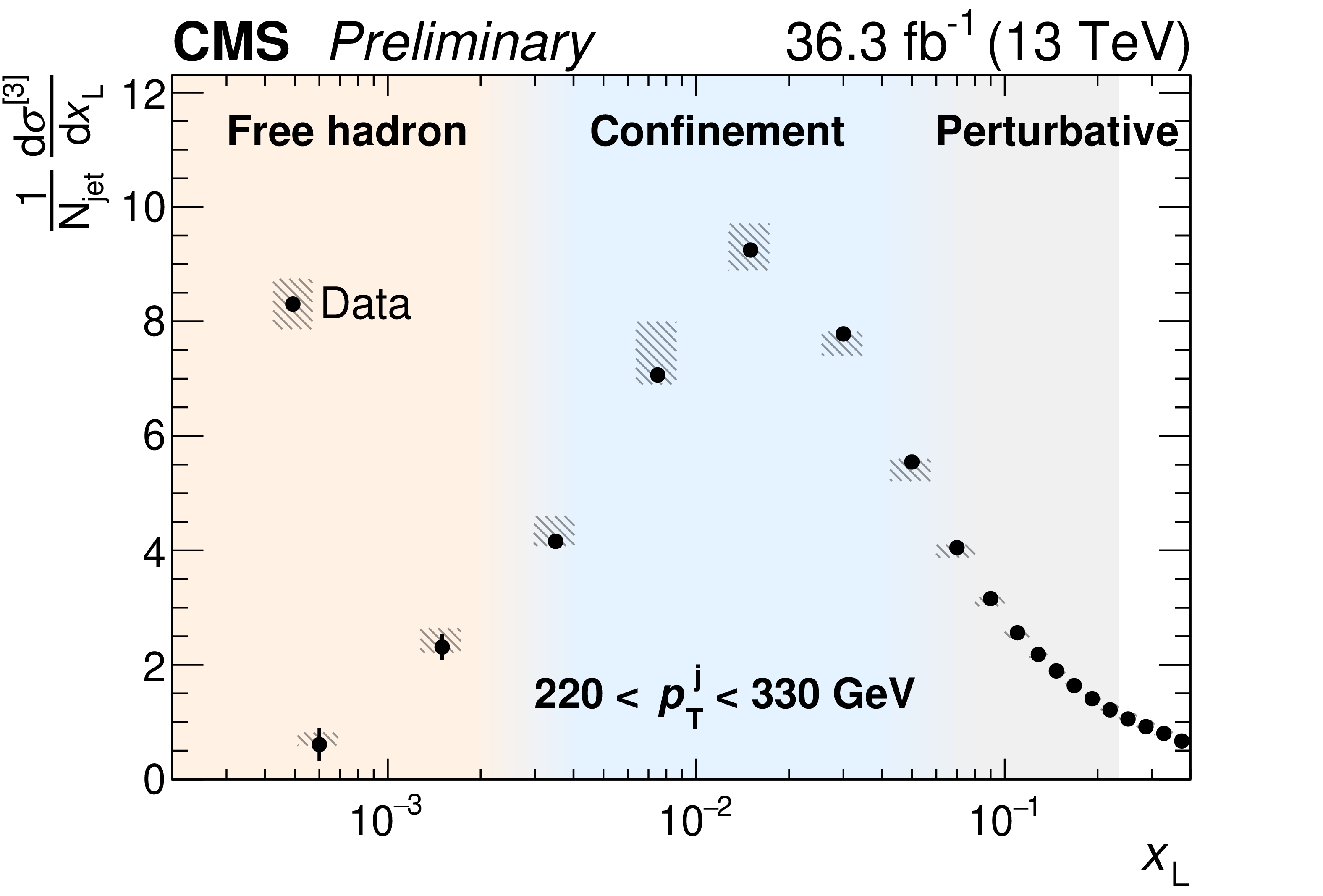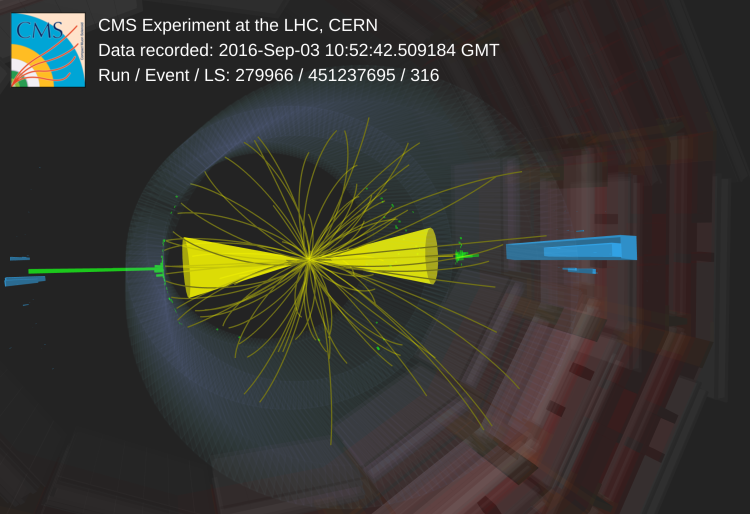Physics experiments like those at CERN have shown that the world is made up of elementary particles. Some of them, quarks, are forever bound within particles called hadrons. Although scientists know that these elementary building blocks exist, they cannot describe exactly how quarks form protons or neutrons. This lack of knowledge is due to a unique feature of the strong force, which is known as confinement. This phenomenon governs the interaction of quarks and gluons (collectively known as partons) and is the reason why quarks and gluons do not exist as free particles in nature. Their transition to hadrons is called hadronisation and it depends on the energy scale. At high energies, the strong force binds quarks very weakly, whereas at lower energies, quarks interact more strongly and form hadrons. What exactly happens during hadronisation remains an open question as it is challenging to describe mathematically and to measure.
The CMS collaboration is now one step closer to answering this question. After being produced in proton-proton collisions, partons radiate in cascades known as parton showers. New partons form hadrons, eventually leading to a collimated spray of particles called a jet. These jets are produced in abundance in the LHC. Theoretical models suggest that the energies of the particles inside the jet can yield clues about the hadronisation process. By using proton-proton data collected during 2016, the researchers saw that the measurements are in good agreement with the theoretical predictions. They were able to follow the parton-to-hadron evolution from the parton shower stage, when the quarks and gluons are deconfined, to the hadronic phase, when the partons are confined within the hadrons.

Knowing the evolution of this process also helps to determine aS, the quantity that defines the strength of the strong force. The experimentalists explored how aS varies by comparing the energy and distance between different particles inside the jet to the jet energy. They found that the behaviour of aS matches theoretical predictions and they determined its value at the energy corresponding to the Z-boson mass. These results provide new means for studying QCD in collider experiments and will help theorists to further develop and validate their models.

